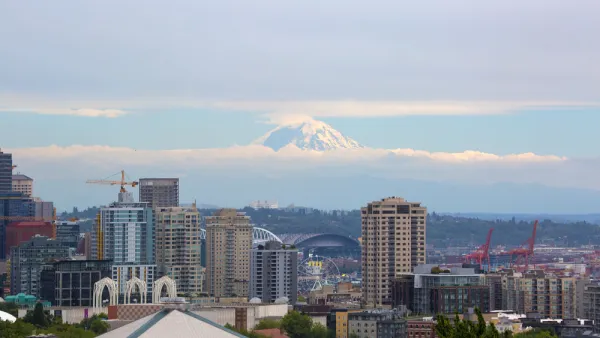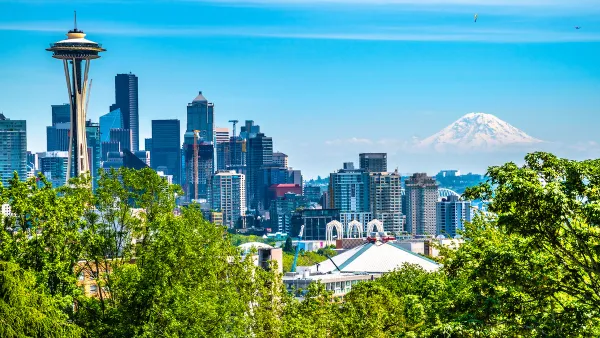The formerly industrial shoreline of Puget Sound will soon undergo $4.5 billion worth of engineering projects that will complete Seattle's waterfront transformation, reports Kirk Johnson.
Next year, "the gaff hooks, warehouses and stink," and other relics of Seattle's industrial waterfront will be buried in history by the construction of "a 1.8-mile big-bore tunnel 200 feet below grade at its deepest, an earthquake-conscious sea wall buttressing the piers and an altered city grid that will come with a demolition of the old viaduct." The city has come a long way from the "big-timber-and-fish era of the 1800s," says Johnson, and massive engineering projects will help complete the transformation. Voters in Seattle approved the first measure of the waterfront package by 77 percent, and the $290 million bond will go towards replacing the eroding sea wall. It was surprising that the measure, with a 30-year property tax increase, received strong local acceptance, but officials attribute the support to the devastation wrought by Hurricane Sandy. "It didn't hurt to have people reminded of nature," said Jennifer Wieland, a transportation planner at the Seattle Department of Transportation.
The sea wall is being redesigned "to create a friendlier, safer transit route for juvenile salmon born in rivers south of Seattle and heading north," and underwater light-enhancement efforts will "mimic conditions in the shallow shore waters that the salmon would swim through in nature." Jeffery R. Cordell, a principal research scientist at the School of Aquatic and Fishery Sciences at the University of Washington, remarked, "This is really quite a unique application of ecological techniques to a sea wall. It's never been done at this scale." This eco-tourism could become a draw for visitors, and officials are considering art projects and education programs as part of "the Construction Experience."
The enthusiasm surrounding the project has been matched by concerns over the long-term disruption of commercial and transportation activities. "Some owners and managers of tourist-related businesses have fretted that the above-ground construction season, currently September to May each year, could impinge too much on Seattle's high season for summer visitors," explains Johnson. "Other waterfront workers say the concrete and steel viaduct itself, which engineers have said could collapse in a strong earthquake, has cast a shadow so long on the area that the added light, in city known for its season gloom, could be startling." Matthew D. Preedy, an engineer and manager at the state's Department of Transportation who is overseeing the tunnel and viaduct project, said managing local expectations comes with the job. "There's a potential for a lot of angst."
FULL STORY: Engineering Projects Will Transform Seattle, All Along the Waterfront

Analysis: Cybertruck Fatality Rate Far Exceeds That of Ford Pinto
The Tesla Cybertruck was recalled seven times last year.

National Parks Layoffs Will Cause Communities to Lose Billions
Thousands of essential park workers were laid off this week, just before the busy spring break season.

Retro-silient?: America’s First “Eco-burb,” The Woodlands Turns 50
A master-planned community north of Houston offers lessons on green infrastructure and resilient design, but falls short of its founder’s lofty affordability and walkability goals.

Test News Post 1
This is a summary

Analysis: Cybertruck Fatality Rate Far Exceeds That of Ford Pinto
The Tesla Cybertruck was recalled seven times last year.

Test News Headline 46
Test for the image on the front page.
Urban Design for Planners 1: Software Tools
This six-course series explores essential urban design concepts using open source software and equips planners with the tools they need to participate fully in the urban design process.
Planning for Universal Design
Learn the tools for implementing Universal Design in planning regulations.
EMC Planning Group, Inc.
Planetizen
Planetizen
Mpact (formerly Rail~Volution)
Great Falls Development Authority, Inc.
HUDs Office of Policy Development and Research
NYU Wagner Graduate School of Public Service



























